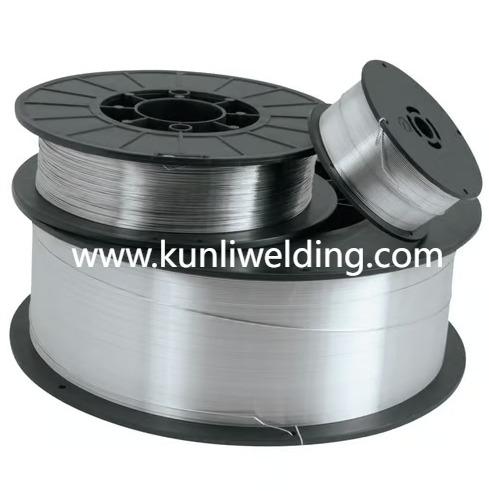Grinding Machinery Market Analysis Key Drivers, Challenges, and Opportunities
A comprehensive grinding machinery market analysis reveals key trends, challenges, and opportunities within the industry. The analysis highlights the increasing adoption of industrial grinding machines in various sectors, driven by the need for precision and efficiency. Additionally, the shift towards automation in manufacturing processes is influencing the demand for advanced grinding solutions, as skilled labor remains essential. The analysis also addresses the impact of economic factors on market growth and the potential for innovations in grinding technology to create new opportunities for manufacturers.
The grinding machinery market has emerged as a critical segment within the global industrial equipment industry, primarily driven by the increasing demand for precision machining, automation, and efficiency in manufacturing processes. Grinding machines are essential tools used across various sectors, including automotive, aerospace, metalworking, and construction, to achieve high-quality surface finishes and tight dimensional tolerances. Over the years, technological advancements, rising industrialization, and the need for productivity enhancement have fueled the growth of this market. Grinding machinery is not only crucial for material removal processes but also plays a pivotal role in improving the overall quality and lifespan of finished products, making it a key investment for modern manufacturing facilities.
Market Overview
The global grinding machinery market is witnessing steady growth due to the increasing industrial production and the need for high-precision components. Traditional grinding machines are being gradually replaced by advanced, computer-controlled machines capable of handling complex designs and hard materials. The market encompasses a wide range of machinery, including surface grinders, cylindrical grinders, centerless grinders, and belt grinders. Each type of machine is designed to serve specific applications and industries, offering unique advantages in terms of efficiency, accuracy, and productivity. The market is further supported by the increasing adoption of automated systems, robotic integration, and smart manufacturing technologies, which streamline production processes while minimizing errors and downtime.
Market Drivers and Growth Factors
Several factors are driving the growth of the grinding machinery market. The increasing demand for precision-engineered components across industries such as aerospace, automotive, and medical devices is a primary driver. Components in these industries require high dimensional accuracy and fine surface finishes, which grinding machines can efficiently provide. Moreover, the ongoing trend of industrial automation and the adoption of CNC (Computer Numerical Control) machines have significantly enhanced production efficiency and reduced labor costs, encouraging manufacturers to invest in advanced grinding solutions. The growth of the automotive industry, particularly in emerging economies, is also a major factor, as the production of engines, transmission components, and other critical parts relies heavily on grinding processes.
Another significant driver is the rise in demand for energy-efficient and eco-friendly machinery. Manufacturers are increasingly focusing on producing machines with low energy consumption and reduced environmental impact, aligning with global sustainability trends. This shift is further amplified by stringent government regulations on emissions and industrial waste management, prompting manufacturers to upgrade to modern grinding equipment. Additionally, the increasing adoption of Industry 4.0 technologies, including IoT-enabled monitoring and predictive maintenance systems, enhances the efficiency and reliability of grinding machines, creating further growth opportunities.
Technological Advancements and Innovations
The grinding machinery market has seen remarkable technological innovations over the past decade. Modern machines incorporate advanced control systems, high-speed spindles, and precision sensors that improve the accuracy and efficiency of grinding operations. CNC grinders have become the standard in many industries due to their ability to automate complex processes, reduce human error, and enable consistent production quality. Hybrid grinding machines, which combine multiple processes such as grinding, turning, and milling, are gaining popularity as they offer flexibility and reduce production cycle times.
Artificial intelligence (AI) and machine learning (ML) are also being integrated into grinding machinery to enhance process optimization and predictive maintenance. These technologies analyze operational data to identify potential issues, reduce machine downtime, and optimize grinding parameters for better surface finishes. Furthermore, the development of new abrasive materials and grinding wheels, including ceramic and superabrasive options, allows manufacturers to process hard-to-machine materials more efficiently, thereby expanding the application range of grinding machines.
Market Segmentation
The grinding machinery market can be segmented based on type, end-use industry, and geography. By type, the market includes surface grinders, cylindrical grinders, centerless grinders, belt grinders, and others. Surface grinders are widely used for flat surfaces, while cylindrical grinders are preferred for round components. Centerless grinders are ideal for mass production of precision parts, and belt grinders are commonly used for deburring and finishing operations. Each type of machine has its unique advantages and is selected based on specific operational requirements.
By end-use industry, the automotive sector dominates the demand for grinding machinery, driven by the need for precision components like crankshafts, camshafts, and gear parts. Aerospace follows closely due to the stringent quality requirements of aircraft components. Other industries such as construction, metalworking, and medical equipment also contribute significantly to market demand. Geographically, North America and Europe have traditionally been key markets due to advanced industrial infrastructure and high adoption of automated systems. However, Asia-Pacific is emerging as the fastest-growing region, fueled by rapid industrialization, infrastructure development, and increasing automotive production in countries like China, India, and Japan.
Competitive Landscape
The competitive landscape of the grinding machinery market is characterized by the presence of established players, regional manufacturers, and innovative start-ups. Leading companies are focusing on technological innovation, strategic partnerships, and expansion into emerging markets to strengthen their market position. Continuous research and development activities allow manufacturers to offer high-performance, durable, and energy-efficient machines, meeting the evolving demands of modern industries. Collaborations with software providers for integrating AI and IoT technologies into grinding machines also provide a competitive edge.
Furthermore, manufacturers are investing in after-sales services, training, and maintenance solutions to enhance customer satisfaction and loyalty. The emphasis on customer-centric approaches, coupled with product innovation, is expected to drive market growth in the coming years. Mergers and acquisitions are also shaping the market dynamics, as companies aim to expand their product portfolios and global reach.
Market Challenges
Despite the growth potential, the grinding machinery market faces several challenges. The high initial investment cost of advanced grinding machines can be a barrier for small and medium-sized enterprises. Additionally, the complexity of CNC and hybrid machines requires skilled operators, creating a demand for specialized training and workforce development. Fluctuations in raw material prices, supply chain disruptions, and geopolitical tensions can also impact market stability. Manufacturers must address these challenges through cost-effective solutions, employee training programs, and diversified sourcing strategies to sustain long-term growth.
Future Outlook
The grinding machinery market is poised for continued growth, driven by technological advancements, industrial automation, and rising demand for precision components. The adoption of smart manufacturing solutions, AI-driven process optimization, and eco-friendly machinery will likely shape the future of the market. As industries increasingly focus on efficiency, quality, and sustainability, grinding machinery will remain an indispensable tool for achieving superior product performance and maintaining competitiveness. Emerging markets, particularly in Asia-Pacific, present significant growth opportunities, while established regions continue to invest in modernization and technological upgrades.
The integration of AI, IoT, and advanced sensors in grinding machines will further improve operational efficiency, predictive maintenance, and real-time monitoring, ensuring minimal downtime and maximum productivity. With a strong emphasis on innovation and customer-centric solutions, manufacturers are well-positioned to capitalize on market growth and meet the evolving needs of global industries. Overall, the grinding machinery market is expected to witness steady expansion, underpinned by technological innovation, industrial growth, and the increasing importance of precision manufacturing across diverse sectors.
Conclusion
In conclusion, the grinding machinery market represents a vital segment of the industrial equipment landscape, fueled by technological advancements, automation, and the need for precision manufacturing. As industries worldwide demand higher quality components, improved efficiency, and reduced operational costs, grinding machines are becoming increasingly indispensable. The market offers numerous growth opportunities, particularly through the adoption of smart technologies, eco-friendly solutions, and hybrid machines. Despite challenges such as high investment costs and the need for skilled operators, the grinding machinery market is expected to continue its upward trajectory, driven by industrialization, innovation, and global demand for precision-engineered products.






